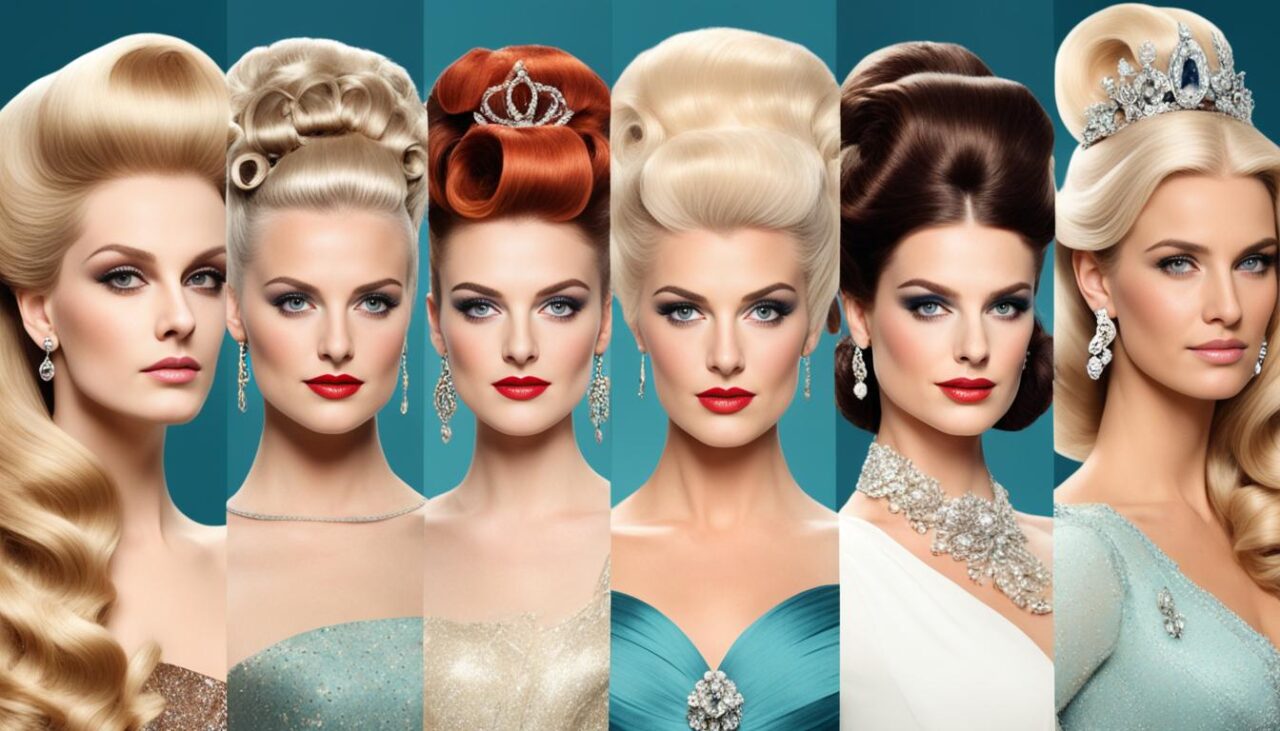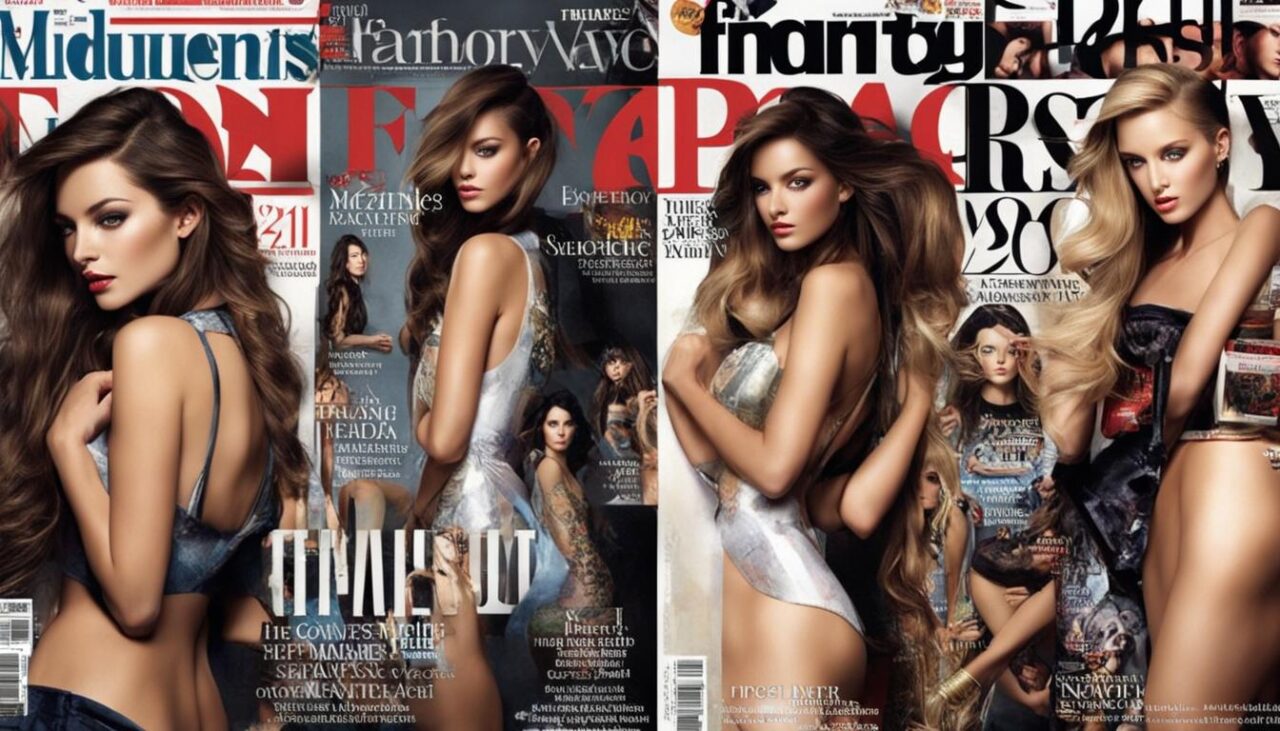Throughout history, the projection of beauty ideals has played a significant role in shaping self-image and imposing beauty pressure on individuals. In our visually saturated world, media influence emerges as a pivotal force, sculpting perceptions and setting often unattainable standards of beauty. It's through this lens that we view ourselves and others, and navigate the complex dynamics of self-worth and physical appearance.
The concept of body image is intricately linked with the media we consume, crafting narratives that define what is considered desirable or beautiful. These beauty ideals are not passive reflections of cultural preferences but active constructs that push individuals towards a continual strive for perfection. As this cycle perpetuates, the pressure to conform can lead to a transformative, yet often challenging, journey of self-discovery and acceptance. This introduction seeks not only to inform but to inspire a reimagining of beauty, through a lens that values diversity and self-expression over conformity and uniformity.
- 1 The Role of Media in Shaping Public Perception of Beauty
- 2 Understanding the Psychology Behind Body Image and Media
- 3 Body Image and Media: Reflecting or Dictating Cultural Ideals
- 4 The Psychological Impact of Media on Young Minds and Body Image
- 5 Strategies for Promoting Healthier Body Images in the Media Landscape
The Role of Media in Shaping Public Perception of Beauty
As we immerse ourselves in the vast landscape of media, it becomes clear that our ideals of beauty and self-perception are frequently reflected and refined by the images and messages to which we are exposed. From historical prints to the dynamic streams of digital content today, the media's influence has been both profound and transformative, sculpting the societal blueprint of attractiveness.
Evolution of Beauty Standards Through Different Media Eras
The journey of beauty standards is a tale of change and adaptation, an evolution dictated by shifts in cultural, technological, and social dynamics. The Golden Age of Hollywood established cinematic sirens as benchmarks for elegance, while the rise of color television introduced a vibrant new spectrum of beauty icons. Culturally, each decade promoted its archetype, leading up to today's digital age, where beauty trends are crowd-sourced and viral, shaped by influencers and icons across the globe.
Impact of Advertising and Fashion Industry on Beauty Norms
In the relentless pursuit of perfection, the fashion industry and advertising have stood as twin pillars upholding the beauty narrative. With their forward-facing campaigns and trend-setting runway shows, they not only sell products but also notions of what is desirable and achievable, crafting a potent visual language that speaks to consumer ambitions and insecurities. This synergetic power continues to engrain stereotypes and expectations into our collective mindset, steering the social compass toward their defined standards of allure.

Analysis of Current Media Trends in Visual Representation
In today's sprawling digital terrain, current media trends advocate for a more diverse showcase of beauty, resisting old templates and forging a more inclusive narrative. The rise of user-generated content on platforms such as Instagram, TikTok, and YouTube, has opened the door for a broader range of visual representation. This wave of authenticity is progressively reshaping the public perception of beauty, making way for a more personalized and varied aesthetic discourse that echoes real-life experiences and stories.
As we continue to navigate through the ever-evolving media landscape, one thing remains clear: the potential to redefine and democratize beauty is immense, signaling a transformative era where every individual can be the architect of their beauty standard.
Understanding the Psychology Behind Body Image and Media
As we navigate through the visual smorgasbord that media provides, it becomes crucial to decode the psychological tapestry behind the psychology of body image. The intricate link between what we consume visually and how we perceive ourselves can no longer be relegated to mere societal whispers. It shapes the framework of our self-worth and the pillars of what we consider to be the epitome of beauty.

Media Influence vs. Individual Self-Image
The insidious nature of media influence on self-image is profound. Visual bombardments of ideal body types can twist the mirror of self-perception, leading to skewed body image cognizance. The battle between media projections and personal contentment with one's physique is steeped in societal narratives and personal anecdotes, uncovering layers of acceptance and rejection.
The Effects of Social Media on Self-Esteem and Body Satisfaction
Social media effects walk hand-in-hand with fluctuations in self-esteem and body satisfaction, guiding the contemporary dialogues on health and wellness. Platforms glorified for connectedness may also serve as arenas for comparison, contests where likes equate validation and influencers become unwitting benchmarks of physical ideals. Here, the endless scroll through polished images may cloud self-appreciation in the shadows of digital perfection.
Addressing the Cognitive Biases Triggered by Media Portrayals
Media portrayals do more than entertain; they weave cognitive biases into the fabric of our daily lives. The halo effect glamorizes certain body types, imbuing them with unwarranted attributes of success and happiness. Such distortions can lead individuals to adopt a skewed reality, one where perception and truth are in constant flux, nudging the psyche towards confirmation bias—seeking out information that reinforces pre-existing beliefs, oftentimes, unrealistic beauty standards propagated by the media.
Understanding our vulnerabilities to media's sway in matters of self-image is the first step towards reclaiming power over personal narratives of beauty and worth.
Body Image and Media: Reflecting or Dictating Cultural Ideals
At the heart of our ever-evolving society lies a complex interplay between the media's portrayal of beauty and the public's perception of cultural ideals. This discussion pulls back the curtain on the media's influential role in shaping and sometimes distorting societal views. As we dissect this dynamic, it's essential to question whether media is simply holding up a mirror to our cultural obsessions or using its power to mold these very fascinations.
Critical Analysis of Media Standards vs. Societal Views
Media standards have long been under scrutiny for their potential role in influencing what society views as the epitome of beauty. A critical lens reveals that these standards may not always align with the diverse realities and perspectives of the society they aim to represent. With media's pervasive reach, it's critical to explore the breadth and depth of its portrayals to truly understand its impact on cultural standards.
How Media Serves as a Mirror to Cultural Obsessions with Beauty
The media has the unparalleled capability to reflect the zeitgeist of the times, often highlighting society's infatuation with physical perfection. No element of societal beauty escapes the media's gaze, as it captures and amplifies the nuances of our collective preferences. But does it sharpen these obsessions into sharper focus than necessary? It's an essential part of the conversation about the role media plays in not just showcasing, but potentially magnifying, our cultural preoccupations.
The Conflict Between Media Representations and Body Positivity Movements
In stark contrast to narrow media representations, the body positivity movement seeks to celebrate diversity and inclusivity in all body types. This movement has gathered momentum, challenging long-standing media narratives and encouraging a seismic shift in societal views. The friction between the two demonstrates a growing divergence—between an industry steeped in traditional beauty ideals and a public learning to embrace a broader spectrum of beauty.
As we navigate through these powerful currents, the interrelation between robust media representations and emerging body positivity movements can no longer be ignored. Together, they are reshaping the societal landscape and redefining the essence of beauty in the modern world.
The Psychological Impact of Media on Young Minds and Body Image
The interplay between the media's influence on youth and the shaping of their body image can no longer be overlooked. As the digital world becomes increasingly visual, young minds are bombarded with images that carry potent psychological impact. The pervasiveness of these images in daily life is not just a backdrop; it actively molds the self-perception of developing adolescents.
“With every image they consume, our young are weaving the tapestry of what constitutes beauty, normalcy, and desirability in their impressionable minds.”
Case studies and emerging data have made it clear that the standardized beauty ideals, consistently portrayed across various media outlets, are directly influencing the perception that the youth have of their own bodies. Media's influence is not a passive encounter—it's an active shaper of reality that can lead to severe consequences such as self-image issues and eating disorders among the young populace.
The bombardment of idealized body images has been shown to erode self-esteem, fueling a continual dissatisfaction with one's own body and a striving for unattainable perfection. This challenge is further complicated by the particular vulnerability of young minds, which are still developing their cognitive abilities to critically engage with the content they consume.
“What they see, they believe, and what they believe, they become. That is the silent psychological impact endured by our youth in their formative years.”
Armed with the knowledge of how powerful media's influence can be on the burgeoning sense of self that characterizes young minds, we face a societal imperative to inject this conversation with both urgency and hope. The transformation of body image perceptions among our youth calls for a compassionate and robust response that promotes psychological resilience, critical thinking, and an inclusive definition of beauty that honors the diversity of all body types.
Strategies for Promoting Healthier Body Images in the Media Landscape
In the pursuit of promoting healthier body images, the media industry is uniquely positioned to catalyze change and inspire a cultural shift towards inclusive beauty ideals. As architects of public perception, media platforms have the power to dismantle the one-size-fits-all beauty narrative, replacing it with a mosaic of diverse and authentic representations. This transformative journey begins with affirming the role of body positivity and expanding the palette of beauty to encompass every form, feature, and complexion.
Role of Body Positivity and Diversity in Shaping New Beauty Ideals
Embracing body positivity manifests in the celebration of bodies in their natural, unaltered splendor, offering relief from the relentless beauty pressure. Incorporating diversity not only challenges outdated standards but also fortifies self-image across various demographics. When media channels illuminate the splendor found in uniqueness and variability, promoting healthier body images becomes an attainable reality, resonating with the ideals of equity and authentic representation.
Encouraging Media Literacy to Combat Unrealistic Beauty Pressure
Building media literacy empowers individuals to navigate the visual onslaught with a discerning eye, critically questioning the deluge of unrealistic portrayals. Educating audiences on the artifice behind meticulously crafted images can deflate the power of such depictions to dictate personal and societal beauty benchmarks. As people become adept at decoding media content, the collective lens through which beauty is viewed can shift towards a more inclusive and humane perspective.
Initiatives Towards Inclusive and Responsible Media Content
Progressive initiatives have begun to surface, aiming to redefine beauty narratives by fostering inclusive media content. These efforts are a testament to the industry's capacity for positive evolution, demonstrating that promoting healthier body images is more than an ideal—it's an action. Whether through brand campaigns that highlight real body types, or editorials that celebrate the broad spectrum of human beauty, each step forward is a stride towards dismantling the monolithic depiction of beauty and endorsing a culture of self-acceptance and love.
Contents
- 1 The Role of Media in Shaping Public Perception of Beauty
- 2 Understanding the Psychology Behind Body Image and Media
- 3 Body Image and Media: Reflecting or Dictating Cultural Ideals
- 4 The Psychological Impact of Media on Young Minds and Body Image
- 5 Strategies for Promoting Healthier Body Images in the Media Landscape







